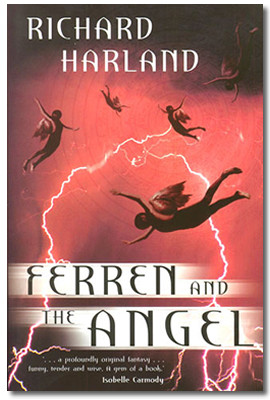1. Powers of Language
I’m back onto an old theme: the difference between what language can do and what the visual media can do. It makes for a good lead-in, at least. Here’s part of a passage I used to show to creative writing students.
 The trapdoor was weighed down with silt. It took half a dozen hands all pushing together to heave it open. Outside the sky was blue and the sun was shining. The trapdoor was weighed down with silt. It took half a dozen hands all pushing together to heave it open. Outside the sky was blue and the sun was shining.
The People clambered out and stood around blinking. There was a cover of soft brown soil over the Home Ground, over the Plain, over everything. All fresh and wet and new. It was like the very first morning of the world. The ground steamed with vapor in the warm sunlight.
Ferren took a deep breath. He looked out over the Plain, where the battle had been. There were no signs now of wrecked machines or burnt grass or black bodies. Instead there were small mounds and low molded hills. The landscape had been smoothed over and made gentle. Even Beaumont Street and the other clumps of ruins had been flattened and buried, just like the Home Ground.
That’s from Ferren and the Angel. I know, because I wrote it, that the author was trying to be as film-like as possible. Yet it’s full of interpretations and understandings that can’t be directly seen.
For example: ‘There were no signs now of wrecked machines or burnt grass or black bodies.’ You can’t directly see a negative. You can see what’s there, small mounds and low molded hills, but you can’t see what’s been taken away. Nor can you see a previous state of the landscape now covered over, the old Home Ground and the buried ruins.
Then there’s the simile: ‘It was like the very first morning of the world.’ How could you see that? The film would need to superimpose one image on top of another.
Or how about this? ‘It took half a dozen hands all pushing together to heave it open.’ You can see hands pushing, but can you actually see that it took half a dozen of them?
Of course, a film director will find ways to encourage an audience to make the desired interpretations. You can prompt what you can’t show. But language does the job directly. |

